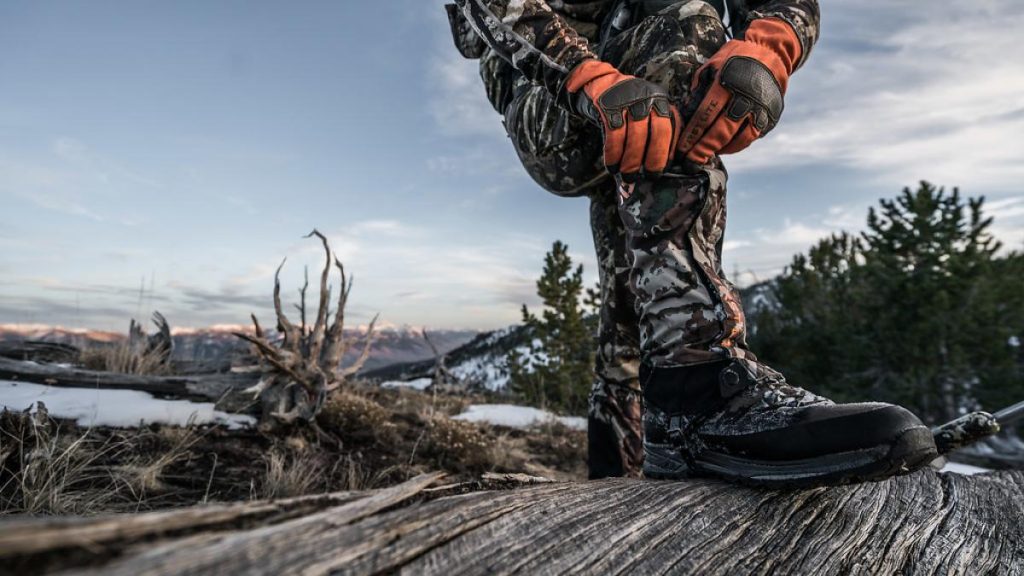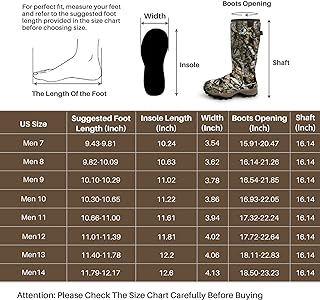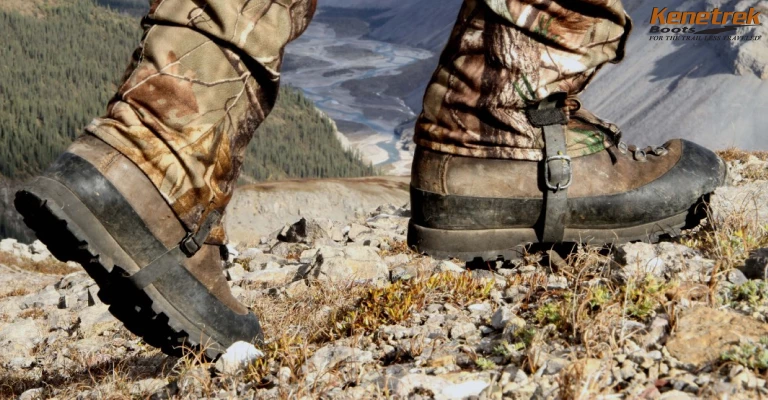When gearing up for a hunting expedition, one crucial consideration often overlooked is the insulation in your boots. The question of “How much insulation do I need in my hunting boots?” is more than just a matter of comfort—it can significantly impact your performance and safety in the field.
Insulation is vital in keeping your feet warm and dry, especially in cold and wet conditions commonly encountered while hunting.
Understanding the right amount of insulation for your hunting boots is essential to ensure comfort, mobility, and protection during outdoor pursuits. This guide will explore the factors influencing insulation requirements, helping you make informed decisions for your next hunting adventure.
Insulation guide for hunting boots
If you’ve ever gone hunting in subfreezing weather, you may understand the agony of wearing insufficient clothes in the late hunting season. More precisely, because your feet don’t receive as much blood flow in colder weather, they are the most vital body part that needs to be appropriately insulated when hunting.

Choosing hunting boots with the right amount of insulation for your activity level and surroundings is crucial if you want to avoid worrying about using a heater to warm your feet or having feet that are too warm while exploring your land.
Our experts in hunting footwear discuss how to choose the appropriate amount of insulation for your hunting environment and activity level.
Insulation’s Significance
Proper insulation is crucial because the cold is not your friend when sitting in a tree stand or blind. By forming a barrier, insulation keeps the warmth inside your feet and the icy outside air out. However, remember that putting too much insulation in your boots will make your feet sweat and add extra weight.
Factors to Consider
Quality of Insulation:
Most hunting boots are made with Thinsulate insulation. It is a synthetic insulation that is lightweight and found in many delicate garments. Imagine yourself in this scenario: two 400-gram pairs of boots with insulation.
One is equipped with Thinsulate, while the other is not. Most hunting boots are made of insulation because it keeps boots warmer, lighter, and warm even when wet.
Insulation Level:
Generally, hunting boots are graded from 0 to 1000 grams. This is the weight of the insulation integrated into the boot, expressed in grams. Because so many other things, such as socks, activity level, and boot materials, can also affect your feet’s temperature, it is impossible to pinpoint an accurate temperature rating for hunting boots.
Activity Level:
You may be walking, hiking, or sitting in a stand or blind, depending on the hunting you will be doing. This will impact how much insulation is needed to keep your feet warm. It is advised that you base your choice on the most common kind of hunting you engage in.
Socks:
Make sure you wear a good pair of hunting socks to provide extra comfort and insulation. This is where you can adjust the amount of insulation that you have. For instance, you should wear more insulating socks if you anticipate spending the colder months sitting in a ground blind. On the other hand, you can wear thin socks if you expect hiking a considerable distance.
Insulation Levels Explained
Your environment and degree of activity are the two key factors to consider when selecting a hunting boot with the appropriate quantity of insulation.
200G: An uninsulated boot is the starting point for insulation. Excellent for chilly climates, 200G hunting boots can keep hunters’ feet toasty in moderately cold conditions, provided they are moving about frequently.

400G: It’s a widespread misperception that a 400G boot is twice as warm as a 200G boot. However, this is untrue. Although it will undoubtedly be more courteous, it will be more challenging since it will be twice as warm. Typically, 400G hunting boots are worn when night gets cold in the fall.
600G: 600G boots are ideal for the transitional weather between freezing and snowfall. Even with snow on the ground, hunters can remain comfortable in 600G hunting boots, depending on their activity.
800G: An 800G insulated boot is recommended for people who anticipate trudging through snow to reach their tree stand or ground blind, and having less insulation than not enough will be preferable when temperatures drop below zero.
1,000G+: You should have 1,000G insulated hunting boots if you anticipate standing in deep snow or chilly water. This is a safe choice for hunters who know they will be hunting in temperatures below freezing.
FAQs
- What role does insulation play in hunting boots?
Insulation in hunting boots acts as a barrier, keeping warmth inside your shoes and cold air outside. It’s crucial for maintaining comfort and preventing frostbite in cold weather conditions.
- How does the quality of insulation affect hunting boots?
The quality of insulation, such as Thinsulate, impacts the performance of hunting boots. Thinsulate insulation is lightweight, keeps feet warm even when wet, and is commonly found in high-quality hunting boots.
- How do activity levels influence insulation needs in hunting boots?
Your activity level, whether walking, hiking, or sitting still, affects the insulation needed in your hunting boots. Higher activity levels may require less insulation, while stationary activities demand more to keep feet warm.
- What is the significance of sock choice for insulation in hunting boots?
Choosing the right socks is essential for adjusting insulation levels in hunting boots. Thicker socks provide more insulation and are suitable for stationary activities in colder weather, while thinner socks are preferable for more active pursuits.
- How do insulation levels vary in hunting boots?
Insulation levels in hunting boots range from uninsulated to over 1,000 grams. Different levels cater to various weather and activity levels, with higher grams suitable for colder environments or less active hunting styles.
What insulation level is recommended for hunting in deep snow or freezing temperatures?
For hunting in deep snow or temperatures below freezing, boots with 800 grams or more of insulation, such as 1,000G+, are recommended to ensure adequate warmth and protection against the cold.
Conclusion
When choosing the proper insulation for your hunting boots, several factors come into play to ensure your comfort and safety in the field. The quality of insulation, ranging from lightweight Thinsulate to heavier options, directly impacts warmth and weight.
Additionally, considering your activity level, environment, and the type of socks you wear can help determine the appropriate insulation level for your needs.
From 200G for moderate conditions to over 1,000G for extreme cold and snow, selecting the proper insulation ensures that your feet stay warm and dry during hunting expeditions.
So, whether you’re trekking through chilly forests or standing in freezing temperatures, choosing the right insulation level is essential for a successful and enjoyable hunting experience.

